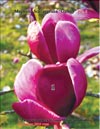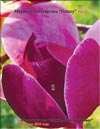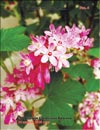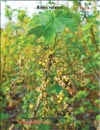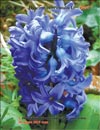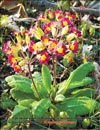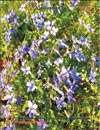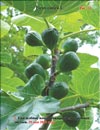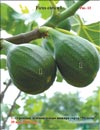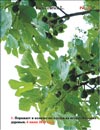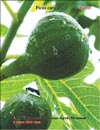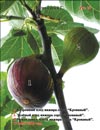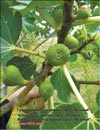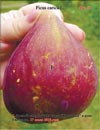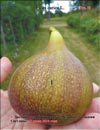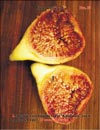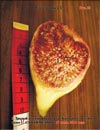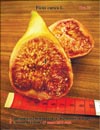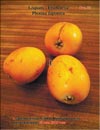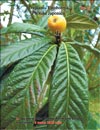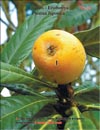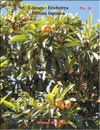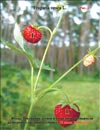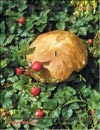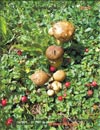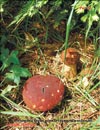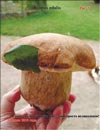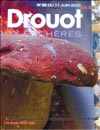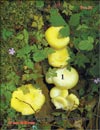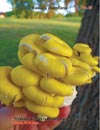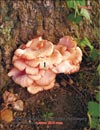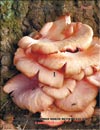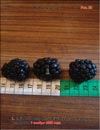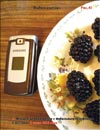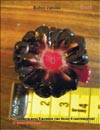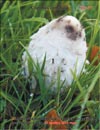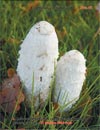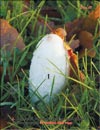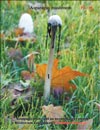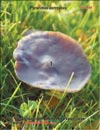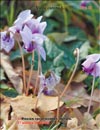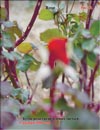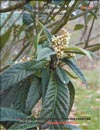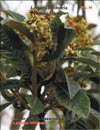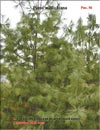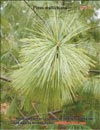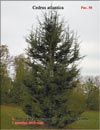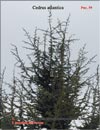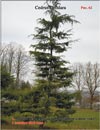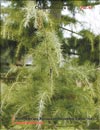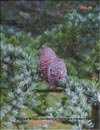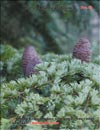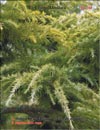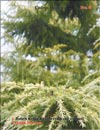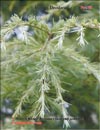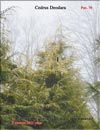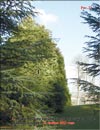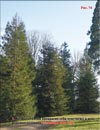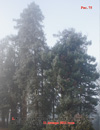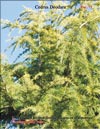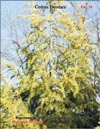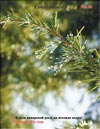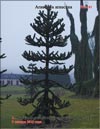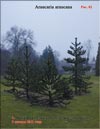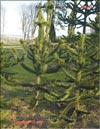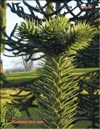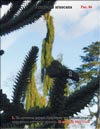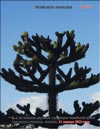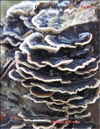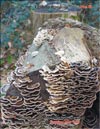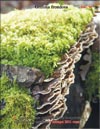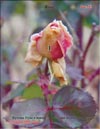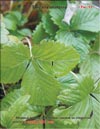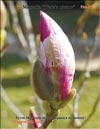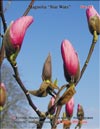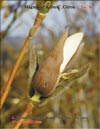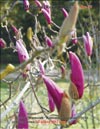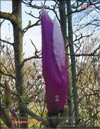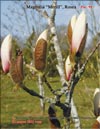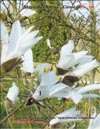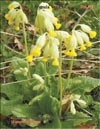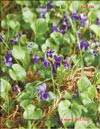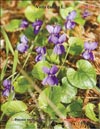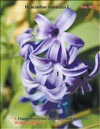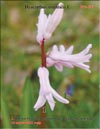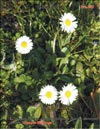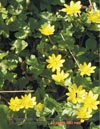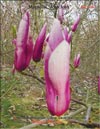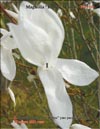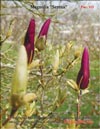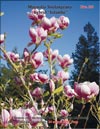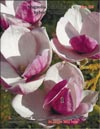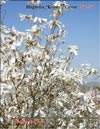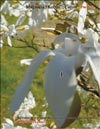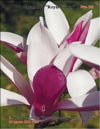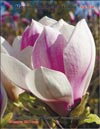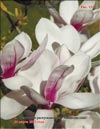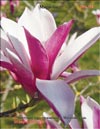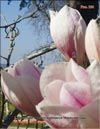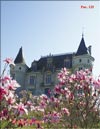| Main Page : About Me : Advice : Articles : Books : Curiosities : Paintings : Photographs : Seminars : Source of Life : Svetlana : Video |
The Source of Life
Part 10. Forward into the Future
In memory of Svetlana
|
By the end of my last article "The Source of Life-9" I had covered everything occurring in our French domain under the influence of the "psi-field" or "dark matter" generator up until May 2010 when I stopped highlighting. Such a long break in the coverage was due to the fact that in May my main concern was military actions against parasites which had just gone mad and started attacking us; Svetlana particularly strongly, and almost continuously in all possible ways and at all levels. After one of the blows to the brain Svetlana had lain in bed for over a month, during which time I restored her memory, which they had aimed to destroy but failed. Svetlana, only slightly recovered from the blow, began working on chapters of her book and preparing her new books for which she gathered the vast amount of material. Her first book and the future, almost ready, ones were more dangerous than nuclear weapons for the parasites. She only had had to arrange and write down everything, and new chapters of her autobiography and the first chapters of her new books would have been ready. She hurried very much to do that job and, having not fully regained her strength after such a blow, did not spare herself. The parasites had not stopped trying, but on the contrary, seeing that one of the blows had almost reached their goal, stepped up their attacks. Svetlana nevertheless found time between all of these in order to take photos for the next article from the series "The Source of Life". So, nothing disappeared, as probably the spiteful critics and trolls of all stripes would have expected. On the contrary, this time there were many new and unexpected, even for us, things, although it would seem that we should get used to them for the simple reason that they came out of the effect produced by the psi-field generator which had been designed, created and put into practice by me. So, I stopped highlighting, unlike the "marvels" which continued to happen. And in this connection I would like to say again that it is really great that we all have the privilege of having at our disposal photos – the events of real life "frozen in time", to which one can return at any moment and instantly recall past events. It would have been almost impossible to prove the reality of the events without photos, just as to provide an opportunity for everyone to see it all with their own eyes. But the moments of life snatched by the camera solve this problem. Thanks to the fact that Svetlana tried to capture any interesting and unusual event which took place in our park and magnolia garden, even during this difficult time for her, I can now continue the narrative of what happens in our domain since the last information which I highlighted in previous A HREF="/English/articles-eng.html" target="_blank">"The Source of Life" articles. Unfortunately after Svetlana’s death I could only take pictures when I was able to visit our French estate where I went to take care of quite different matters, therefore I failed to "freeze" in time many key points of what was happening there. However, during this period of time not only old "miracles" remained but many new ones appeared! But let me tell about everything one after another… In 2010, magnolia buds began to blossom in the middle of April, because the winter was very long and cold, as mentioned earlier in "The Source of Life-9". Svetlana then took just a few photos of the blooming buds. I have written about the magnolias so much that I find no sense in repeating it over and over again. Nothing disappears or is lost, and all the incredible changes which the psi-field generator produced strengthened from year to year. The huge petals of the buds become denser with every year, which suggests that it becomes the norm. However, I could not resist and decided to put the amazing pictures of blooming magnolia buds in. These are the last photos that Svetlana took of her beloved magnolias (Fig. 1). As we can see, the buds are still huge but the petals are much thicker. It has become a regularity; first the petals and leaves grow in size and then became thick and dense! The petals of our magnolias are very dense and thick and acquired a kind of pearly glow. The open buds of Magnolia Soulangeana "Galaxy" look like pearl shells which have their pearl finish not only inside but outside as well (Fig. 2) but at the same time the petals have preserved their transparency. One cannot help admiring the beauty and perfection of forms when looking at these beautiful creations of nature. The flowering redcurrant "Ribes vulgare Lam" (Fig. 3) has inflorescences of amazing size and colour depth of each flower (Fig. 4). You can compare the size of flowers, buds and leaves, which, by the way, are also larger than usual. The petals of the redcurrant’s flower buds are very dense! No wonder that they produce such huge berries, but the redcurrant berries are still some way off, it just needs the blossoms to fade away. I do admire the beauty of nature; its harmony and perfection of form is incredible! The blackcurrant "Ribes Negrum L" is ready to open up its buds, the flowers have already begun to unfold to meet the sun (Fig. 5). The white currant "Ribes Rubrum" (Fig. 6) doesn’t lag behind, just as other plants of our domain! Hyacinths "Hyacinthus Orientalis L" began to flower some time before blackcurrants (Fig. 7). Their inflorescences are not only beautiful but huge. It is of interest that we did not plant them. They appeared a few years after I had installed the psi-field generator. Someone had planted them but for some time they did not appear until the growing conditions for them was favourable. By mid-April the spring primroses "Primula Veris L" were strewn across all fields (Fig. 8). Among them there are some specimens of very unusual colour (Fig. 9). I know these flowers very well, because whilst a child I often picked them on the slopes of the mount Zmeika, but I have never seen this colour before. Small glades among the trees are covered with violets in full bloom (Fig. 10).
Everything is blooming. Nature rejoices in the spring, the warmth and the triumph of Life in the eternal confrontation of Life and Death, decay and renewal. The psi-field generator finally put an end to this fight – Life has won forever. The harmonious influence upon nature has created conditions when it is possible not only to stop the elimination of newer species of plants and animals, the poisoning of the soil, rivers, lakes, seas and oceans as a result of "reasoning" human activity, but to restore, if not all, then much of what has been destroyed and to purify what has already been poisoned and is dead! It’s not just an idle fancy, but an objective reality proved by what is happening on our French property. The "marvels" do not disappear but the new ones appear every year and the "old" ones are only gaining momentum. This experiment, begun in 2003, is still ongoing and will continue for as long as the psi-field generator remains active. The next generation of fruit is beginning to form on the still bare branches of the fig tree "Ficuscarica L" (Fig. 11). Much has already been said about our fig trees; they should not be growing on limestone and red clay in such climatic conditions at all! Nevertheless, these plants are not just growing, but under the influence of the psi-field generator they have begun to bear fruit all year round and the size of the fruits is enormous. Yet again there is no hint of the leaves, but we can see young fruits of a rather impressive size despite them being just fig ovaries a few days ago. One can only imagine what the size of the ripe fruit will be from such a germ, but it is still too early to say. By the end of May 2010 the branches were covered with huge green "Golden" figs among the very large leaves! Against the background of fifty centimetre leaves, the ripening fruits do not look so impressive but you should not draw hasty conclusions about their size until they are totally ripe and measured (Fig. 12). It is of interest that the acquired new properties not only remain in figs, but continue to develop. The leaves and flowers get bigger, denser and thicker year by year; fruit grows in size and it is hard to say when this process will reach a certain balance and harmony. Just look at the still green "Moisson" fig variety to see this at first hand (Fig. 13). Not only is the size of leaves and fruits that amazes but also the number of fruits on each branch of still very young plants (Fig. 14). Even though the branches have not become very thick, they easily bear the weight of so many fruits! This means that the latest adjustment to the psi-field generator caused by the need to strengthen the branches of many trees, including the figs, worked perfectly! Branches do not bend even under the weight of such a large number of maturing fruits as happened in 2009. In addition to that, not only the branches became stronger but the fruit-stalks too (Fig. 15). They do not bend or break under the weight of huge fruit as they did before.
It is summer and on the same branch you can still see several generations of ripening fruit (Fig. 16). All these "marvels" have become the norm, although it is valid only within the range of action field of the generator. These ripened figs are truly enormous, as you can see by looking at the photo where Svetlana’s hand is visible holding the branch (Fig. 17). The number of the closely packed new ovaries (Fig. 18) is staggering. They "sit" so tightly that sometimes impinge upon each other and the size of the mature fruits impresses a lot. Just look at the varieties "Bloody" and "Honey" in Svetlana’s hand and you can be sure that the fruits are truly enormous (Fig. 18 and Fig. 19). If someone out there thinks that Svetlana’s hand is very small, I must disappoint them. Of course Svetlana’s hands are not huge, but not as small as a baby’s – see the next pictures (Fig. 20, Fig. 21 and Fig. 22)
By the end of May, 2010 the Japanese plum "Photinia Japonica" fruits were fully ripe (Fig. 23) although they had been maturing for considerably longer than their "normal" colleagues usually do. This is explained by the fact that their blooming and the ovaries development occurred in conditions of low sub-zero temperatures, which is impossible at normal circumstances! Besides, the trees should die a long time ago, not to mention the formation of flowers and fruit at sub-zero Celsius. Two weeks after the first crop was harvested, the second generation of plums peeped through the huge leaves, which is several times faster than these fruits would ripen under normal conditions (Fig. 24). The second generation fruits not only matured incredibly quickly, but appeared substantially bigger than the conventional ones (Fig. 25). This is not a single fruit, but one of many which covered the branches of the Japanese plum with the second crop (Fig. 26). Unfortunately the first generation fruits were much less as there was "no-one" to pollinate them. Only the wind could partially replace the bees and other insect pollinators which go into hibernation for the winter. By mid-June 2010 the meadows were again covered with very large, or rather enormous wild strawberries "Fragaria Vesca" (Fig. 27) but one can gather not only wild strawberries there but also… ceps "Boletes Edulis" (Fig. 28)! This combination is incredible but it is a fact. The thing is not that one mushroom confused autumn and spring, so that one could call this phenomenon an anomaly, on the contrary, the strawberry meadows were full of ceps. Look at the whole big family which settled comfortably among the mature forest strawberries (Fig. 29). Some ceps did decide to hide away from prying eyes but Svetlana still found them (Fig. 30). Others were not big fans of "standing out" (Fig. 31) but it did not save them, they at least caught Svetlana’s eye and armed with her camera she made them part of the annals of the extraordinary occurring under the influence of the psi-field generator in our French domain (Fig. 32).
King of the autumn forest, the cep, has once again decided to claim the right to the throne in early summer as evidenced by the following photograph taken by Svetlana (Fig. 33). All of these incredible phenomena are already common, a matter of course, but this is only within the range of the psi-field generator; beyond that everything carries on as before. No change! At the end of May 2010 new species of mushrooms, which had not previously been seen in our park, appeared. It was unusual to see the bright Yellow Russulas’ hats in the background of the bright green grass (Fig. 34). The following is background information about this mushroom. Yellow Russula "Russula Claroflava". The visible cup is first hemispherical then flat and finally almost funnel shaped, 5-10 cm in diameter, smooth and dry. It has a smooth edge from which the intensely yellow skin peels back. The margin is at first more or less turned down, then smooth and dull. The flesh is sweet smelling, white and when broken turns grey and then black is less palatable when young. The gills are white, then pale yellow and when damaged or aged turn grey. The stem is always white (never reddish), smooth, cylindrical, greyish at the base, dense. The fungus is referred to as edible, third category. You can eat this mushroom fresh or salted. It is characterized by a pure yellow colour, greyish pulp and yellowish spores. It grows often, but not abundantly, in moist Birch, Pine and Aspen forests and on the outskirts of sphagnum bogs from July to October. As follows from the description of this fungus, it grows in damp places on the outskirts of bogs from July to October! In our case Yellow Russula appeared in late May on the top of a limestone hill which never could retain water! And with all this, the mushrooms themselves are perfectly healthy and free of worms as everyone can see by looking at the photograph taken by Svetlana (Fig. 35). In 2010 we saw another fungus, Pink Oyster "Pleurotus Djamor" (Fig. 36). Here is some background information about this mushroom. Mushrooms of the Pleurotus species grow on different types of wood and various kinds of agricultural waste which distinguishes them from any other fungi. In artificial conditions they grow on wood-waste such as sawdust, wood shavings, the bark of coniferous and deciduous trees and paper pulp sludge. They also grow on agricultural waste; cereal straw, corn cobs and stalks, sugar cane waste, coffee waste (husks stems and leaves), tow, cane, sunflower and other materials containing cellulose. Oyster mushrooms cover the entire palette of colours: white, blue, grey, brown, gold and pink. Of these "Pleurotus Pulmonarius" is the most resistant to high ambient temperatures and are very easy to grow. "Pleutorus Citrinopileatu", Gold Oyster and "Pleutorus Djamor", Pink Oyster, have the most extensive range of colours. "Pleurotus Ostreatus", the Oyster mushroom is the most common, found in all the world’s forests and in all climatic zones of the globe. Oyster mushroom "Pleurotus Ostreatus Kum", a wood-eating fungus, belongs to the ecological group of fungi-saprophyte as an organic substrate using weakened and dead trees and stumps. It prefers to settle on deciduous trees, rarely on conifers. In the European part of Russia the Oyster continues fruiting from late April to November with a peak in September and October. Mushrooms have absolutely no fear of frost and tolerate sub-zero temperatures. Oyster mushroom fungus is fairly large. Pileus has a diameter of 5-15 centimetres. The surface of the cap is smooth, naked. When the fungus is growing in wet conditions the Pileus often has mycelial plaque. The colour of the cap is dark brown, dark grey, bluish black, sometimes with bluish or purple tinges. Hymenophore mushroom plates run downward and are more or less closely spaced, white or whitish. The surface of the stipe is smooth or fibrous but sometimes absent. The flesh of the fungus is white, succulent, with age, fibrous. Fungi form aggregates of up to thirty or more carpophores (fruiting bodies). Mycelium has a high rate of decomposition of the organic substrate and rapid growth. The growth rate of mycelium under favourable conditions is up to 0.5 millimetres per day. Various phases of the life cycle of Oyster mushrooms require different microclimatic conditions. For the growth and development of mycelium the optimum temperature is 20-22 Celsius, humidity 95-100%. Excess CO2 (up to 28% concentration) has a beneficial effect on the rate of growth and promotes the formation of aerial mycelium. Light during the growth is not required; on the contrary, darkness contributes to the mycelium. In the formation of the fruiting bodies of fungi, the optimum temperature is 12-15 Celsius and humidity 85-100%. CO2 content should not exceed 0.1%. Illumination is 920 Lux for eight hours of daylight. Oyster mushrooms are suitable for all types of cooking. Pink Oyster mushrooms appeared for the first time. In truth they were usual for a while, but once again we were surprised by the purity of the fungus. The ant scouts found them and their colonies got a lot of tasty food (Fig. 37). Within a few years there were so many previously unknown fungi in our domain that describing them would take a lot of pages. However there was something that was very difficult to overcome. The thing is that many species of fungi could not be determined. Some of my searches and those of Svetlana, or guides to mushrooms, which Svetlana ordered, failed. It is possible that "narrow field" specialists who are engaged in mycology have only been able to determine what are they! But this is not important. The key thing is that these fungi did not exist before, and they appeared only after the psi-field generator was installed in our domain. The action of the psi-field generator never ceases to amaze! One of the heroes of nature’s epic poems for several years was the Blackberry "Rubus Caesius", a berry familiar to many. For the first time this berry has become the hero of "The Source of Life-6". But apparently it enjoyed the "glory of the hero" so much that it "decided" to hold your particular interest. This berry could do it which is hardly surprising if we read about the "award recommendation" of our hero! Back in 2008 the blackberry cane surprised us with the size of its berries (Fig. 38) but the very next year, 2009, the berries were even larger! While in 2008 the blackberry’s fruits were about three centimetres in length, in 2009 they were already more than four (Fig. 39)! It would seem they couldn’t get much longer, could they? It turned that there was much more and still is!
In 2010 the Blackberry berries became even bigger! One, just one, berry completely covers half of Svetlana’s palm (Fig. 40)! And for the sceptics, Svetlana’s hands, while much smaller than mine, are not diminutive and especially for them Svetlana photographed these berries next to the mobile phone (Fig. 41). In case of sceptics objecting that the phone is small I asked Svetlana to take photos of the blackberries next to a meter (Fig. 42). It is perfectly clear in this photo that in 2010 the berries were already more than five centimetres in length! But what is the most surprising is that they were more than four centimetres in diameter (Fig. 43)! I think no comment is needed. All this happens without using any chemical fertilizer, in the poorest and most disadvantageous soil – limestone and red clay! For a number of reasons these photos are the last of the Blackberry ones taken by Svetlana. All her pictures were filled with the light and warmth of someone who felt and loved life. Svetlana was able to capture the aspects of nature’s surrounding that most do not, or cannot even notice. For six years Svetlana chronicled what was happening in our French domain under the influence of the psi-field generator which I installed in 2003. The need to create a generator was prompted by the critical situation in Europe’s climate which had arisen as a result of US testing of climate control weapons over the obstinate Europe, which by no means wanted to use the US GMO’s (Genetically modified organisms). In order to bring the Old World to its knees, an ozone hole was created over Western Europe and the thickness of the ozone layer decreased more than by forty percent. After the destruction of the satellite equipment creating an ionic lens over Western Europe it was officially announced that the ozone hole over it had "somehow" disappeared. A similar ozone hole appeared over central Russia (to read about this, see the articles "Anti-Russian Anticyclone" and A HREF="English/Articles/Anti-Russian Anticyclone-2-eng.html" target="_blank">"Anti-Russian Anticyclone-2"). It was the application of climate control weapons by the United States and the need to save the plants in our park and garden from destruction that pushed me into creating the psi-field generator. More precisely, Svetlana prompted me when threatened with the loss of unique trees in our magnolia garden. Svetlana asked me to do something to save them from dying of the heat and languishing from lack of water. By the way, our magnolia garden is unique, the only one of its kind in Europe as Svetlana gathered unique varieties of magnolias, many of which grow only in this garden which she designed and created. In a very short time Svetlana became an expert on plants at the highest level, acknowledged by Professor Gerard Chartier, she knew no less about plants than he did, although he had devoted more than forty years of his life to it and become a recognized authority in his field! Svetlana studied the nuances and creation of the Japanese Garden and came up with a fundamentally new type of Bonsai trees. At the same time she became a great art expert. She studied the works of the great masters of the Renaissance – Titian, Rembrandt, Raphael and others, reading books about their works in Latin, Italian, French and English, the original documents of the time when they lived. Just about Titian she read more than six hundred books! Svetlana also continued to work on her book A HREF="English/svetlana-eng.html" target="_blank">"Revelation", and continued to collect material for several others and was engaged a great many other activities. In the midst of all this observing and photographing what was happening in our French domain… many thousands of photos which were not just pictures! Almost every photo is a work of art! Svetlana felt very close to nature and her photos of it are alive. But there was another activity to which she devoted her life and because of which was basely murdered, after numerous failed attempts… This activity took a lot of time and effort but was worth the huge stress. It granted joy; the joy of knowing that you are doing everything in your power to save others, that you have fire, that you do not crawl but fly, that your deeds are not for your benefit but for others who are not even aware of what is being done for them. And this is not done for the sake of gratitude, but because you cannot act in any other way. Such was and has remained, Svetlana… She lost her physical body but continues to fight and save others… but that is another story… Meanwhile a part of her soul continues to live in the park and magnolia garden of our French domain. My first visit there did not bring me joy, but the sorrow and pain of loss. For quite a while I took no photos… I think there is no need to explain the reasons for this. Only in the last few days before returning to Moscow, I took the camera and went to inspect the property. The end of November is not the best time for photographs. Many plants were in the intermediate phase. The last fruiting was completed and the new one not yet begun, so I had to be content with what we had, but even at this time there was something to see. At the end of November 2010 the meadows are still wearing the Hairy Beetle – "Coprinus Comatusu" (Fig. 44). The name of this fungus speaks for itself, but in our park, there is no manure and these mushrooms grow in the meadows, where the basis of the soil is still the same limestone (Fig. 45, Fig. 46 and Fig. 47). There they were growing among the young grass and fallen leaves, which are already losing the golden glow of autumn. Still, the end of November is the end of November, and December, the first month of winter, knocks at the door. Keeping up with the Hairy Beetle is the Asparagus mushroom. This fungus is trying to prove his superiority over the Hairy Beetle showing off its slender "frame" and tall "stature" (Fig. 48). Pleurotus Ostreatus also showed his hat in the meadow (Fig. 49).
Champignons, on top as always, their very cute hats can be seen in February and November (Fig. 50) and in general all year, as long as the rain does not forget to water the land. When it does rain there are no problems… Mushroom Kingdom all year round! It is hard to even imagine such a variety of mushrooms in one place, and fungi of different climatic zones and different eras. But the evidence is a serious matter; they are hard to ignore, no matter how much opponents, foaming at the mouth, try to deny the obvious. Only one question arises; who is behind them, who benefits if the technology to get incredible yields in extraordinary circumstances without harmful chemicals is not available to people? This is beneficial only to those, who imposed on us all, genetically modified foods, which means a genetic weapon that kills the future generations by simply not allowing them to be born. To my own surprise I found violets blooming in the glades among dry autumn leaves at the end of November (Fig. 51 and Fig. 52)! Violets seem to be nothing special but in late November they are still unusual. If there had been a sudden warming and nature had been deceived, it would then be understandable, within limits, but the whole of November in France was cold, freezing not only at night. So nature could not be "deceived" about the advent of spring. Once again it is not in nature but the influence of the psi-field generator with all its programs and potential. It was not only the violets that were blooming in late November, the rose bushes too were adorned with buds, unfortunately the bud in the picture is out of focus but, a fact is a fact. At the end of November I took a lot of pictures and did not look at what I had captured, so that when I found the buds to be not in focus it was impossible to fix that (Fig. 53). In late November, Japanese Plum "Loquats Eriobotria Photina Japonica" was once again in bloom (Fig. 54). Already much has been written about this plant so I will not repeat myself but only note that once again, in the winter, these very heat-loving trees released their inflorescences. Also we can see a small winter fruit (Fig. 55) among the buds and open flowers. Once again the unbelievable happens to these heat-loving plants. What is then said of such cases is "This cannot be because this cannot BE!" Even though winter 2010-2011 in France was not as cold as the previous years, nights were still freezing and the pools and the pond, even during the day in a above-zero temperature kept a centimetre thickness of ice. Even with such "mild" conditions the Japanese plum should have died, not to mention the fact that the inflorescences and fruit bud appeared!
Our coniferous tree species continue to amaze. Gymnosperms are relatively slow growing, as already mentioned previously mentioned in the "Source of Life", to verify this just look at the conifer branches. Fresh shoots are distinguished from the old by their colour. Young shoots can be from the lightest green to simple light green colour showing up against the dark green of the needles on the old shoots. For each type the background information about optimal growth conditions and growth rates has been provided. For many coniferous trees, especially redwoods, limestone is the worst case scenario for growth. The data sheets provide information on the annual growth rate of the best varieties for each type of soil and climate conditions and which soils can grow certain species. No need to describe it all again, those interested can read all about it in "The Source of Life-5", "The Source of Life-6" and "The Source of Life-7". The rate of growth of the coniferous trees in our park has not only not diminished, but increased. It sounds incredible, but it’s true. The accelerating growth of our conifers, 5 or 6 times faster than usual, was not the limit. For many, these data say little, but if explained a little more, it becomes clear to everyone. On our planet many forests have been destroyed, mostly coniferous. Even after harvesting cuttings to plant young trees it would take a HUNDRED YEARS, if all went well, to grow a new forest. With the psi-field generator a new forest would arise over FIFTEEN TO TWENTY YEARS, max! If the trend of accelerated growth under the influence of the generator is maintained, the rate would be even faster. The most important thing in all this is that the generator can influence millions of square kilometres at the same time. Here, for the inquisitive reader is the information on those conifers not previously mentioned. Pinus wallichiana A.B. Jackson (P. excelsa Wall. ex D. Don; P. Griffithii M'Clelland). A pine native to East Asia: Himalayas, east Afghanistan, Balochistan, north Burma, China (Yunnan province, south-east Tibet), north-eastern India. It’s a fast-growing tree which reaches a height of 50 meters; the crown is pyramidal; when erect the branches could grow from the ground-level; the bark is dark-ash-grey, wrinkled, with peeling lamina; branches are horizontal, spreading, the upper ones are elevated; young shoots are naked, slightly resinous, getting dark when mature. Buds are cylindrical top-shaped, 6 to 8 mm long with clean or resinous scales. Needles are in bundles of five and stay on branches for 3 or 4 years; they are mostly vertical on young shoots and hanging down on old, thin, 15 to 20 cm long, sharp, bluish-silver with a softly cut edge and white stomatal lines in the interior; green on the spine. The cones are on a leafstalk of 2 or 5 cm at first stand straight, later hang down, light-brown, 30 cm long, often with resinous runs. It needs abundant light and free space and is one of the most beautiful pines. In Russia it has been cultivated from 1823 and in the Saint Petersburg Botanical Garden from 1858. It was repeatedly restored in the collection. It is first mentioned in "Russian dendrology" (1870) by Eduard August von Regel. The pine is interesting for dendrology collections if planted in protected places and taken good care of. There are well-developed specimens which regularly form cones in the Arboretum of the Saint Petersburg Forest Engineering Academy. This is the reference data of another dweller in our park, Himalayan Pine (Fig. 56). Light green young needles on young branches brightly stand out from their older counterparts and it is therefore very easy to see which branches are new growth and which were already living in this world before. (Fig. 57). In the following pictures the freestanding cedar sent out a lot of extremely long young shoots which are all reaching upward toward the sun. The shoots are already pushed up not only at the top of the tree, but on the lower branches. The young shoots then grew so quickly that the young branches were unable to stiffen and therefore maintained their flexibility. That is why they all reached up, not just sideways, as is usual (Fig. 58, Fig.59, Fig. 60 and Fig. 61). Such a thing does not happen in nature but this phenomenon was observed in our park. Something similar happens with all the conifers; to verify this just look at the long flexible shoots of the cedar, Deodar, (Fig. 62 è Fig. 63). At first glance you might think you are looking at the branches of a Weeping Willow and only the needles convince us that this is in fact, a pine tree.
Unfortunately, after Svetlana’s murder there was no-one to carry on the constant monitoring of what was happening in our French domain. The terrible necessity forced me to come to there at the end of November 2010 just before the New Year… I celebrated it alone, just as Svetlana did all those years. We did not have occasion to celebrate New Year together in our castle. Last New Years we could do it with Skype’s help, first in Russian time, then in French. A small digression and it is sad… However, the matter is not only in that there is no constant surveillance taking place and many interesting things happening in the park and magnolia garden remained, and still remain uncommitted to camera. But in that Svetlana’s rare talent as a photographer has made it possible for so many people, very far away from France, to see things that are amazing in every way. She has taken thousands of photographs, many of which have been seen by hundreds of people. Even agents provocateurs were forced to stop their attacks on my series "The Source of Life" and accusing me of photomontage. In fact Photoshop has never been used. Anyone who understands it will know that even if one wished to, it would be impossible to do that many imitations, and can check it out for themselves. For this it is only necessary to enlarge any photograph to a size where you can see the pixels which make up the image. At any interference with a digital photograph in any montage, the pixels will not match. Provocateurs, of course, know this but keep silent; however the vast majority of the readers of their "opus magnum" did not and do not have the slightest idea. So, it was Svetlana’s feat too. She had to take pictures in the pouring rain and at twenty below dig out from under the snow, with her hands, the bushes with ripe berries, strawberries and shitake mushroom hats in January and much, much more… New Year’s Eve in the Royal Valley turned out to be very warm. For the first time in the last ten years, in the winter of 2010-2011 there was no snow or severe frosts. In late December-early January, it was warmer than in November. Although the night-time temperatures dropped below zero, in the daytime it was above zero. In early January the daytime temperature rose to +14°C. The Blue Cedars "Cedrus Atlantica F. Glauca" are still solidly rooted in the limestone (Fig. 64, Fig. 65 and Fig. 66). It is even more surprising that according to reference data, they do not tolerate even the presence of lime in the soil, but in our case, they are great and growing in solid limestone! The presence of lime not to mention limestone is a negative for most of the plants growing in our garden and park. In fact many plants should have died on this basis, and not only do they not die, but grow ten times faster than in the best conditions, according to the reference data, for them. In only a month, between my first and second visit to France, new shoots emerged (Fig. 67, Fig. 68 and Fig. 69) and the tips of the cedars has stretched upwards just extraordinarily (Fig. 70)!
Generally in our park, all coniferous trees including Redwoods, continue not only to thrive on the limestone, but are fantastically fast growing from the standpoint of modern Science (Fig. 71, Fig. 72, Fig. 73, Fig. 74 and Fig.75). The psi-field generator creates the conditions for the life and growth of plants (not only) that in nature do not exist and have not existed before. With all the grandeur of nature, it has no mind and cannot create something that mind can create taking into account a lot of minutest details. The blind force of nature – natural selection over hundreds of millions of years, has led to the formation of currently existing forms of vegetation within climatic zones that have not changed immediately or within a very short period of time. A sharp change in climate and other conditions results in the death of the vast majority of plant forms which are simply unable to adapt to new climatic conditions quickly. If they did have the time necessary for a smooth adaptation to changing environmental conditions, the resulting plants would have changed beyond recognition! What happened in reality: where equatorial forests grew is now the vegetation of the tundra, coniferous forests etc. Knowledge of the laws of nature and the nature of living matter can get incredible results in terms of yield and plant growth in conditions totally unacceptable to most of vegetable organisms without changing them dramatically. The observation of the psi-field generator influence for over more than seven consecutive years confirms this in practice. By the way, the Redwood and Cedar trees were planted in our park recently, and many of them were quite old before they were transplanted into the limestone. Not only did they endure perfectly the transplantation to another location, in fact with the worst conditions, but they also began to grow incredibly fast in these conditions. The largest of the transplanted trees was Redwood "Sequoia Sempervirens" (Fig. 76). Before we bought the estate there were only weedy pines growing. By the way the only reminder that it was still winter, January, was a temperature drop. Photos taken at three o’clock in the afternoon gave the impression that it was summer outside, while photos taken at eight o’clock the same day (Fig. 75 and Fig. 76) look like late autumn. The next day was sunny again and during the day achieved temperatures of 14-15°Celsius. The weather was sunnier than ever thus I managed to get clear pictures of the tops of the cedars. The photos clearly show the growth rates of the conifers; the fact that some of the trees are not so high made it possible to capture these extraordinary phenomena (Fig. 77 and Fig. 78). Young bark, huge pale green shoots and the light green colour of the new needles are irrefutable proof of what is going on in our domain, under the influence of the psi-field or Dark Matter generator.
I would like to note that I use the term "Dark Matter" in relation to the generator because it was introduced by Official Science, which refers to 90 percent of the matter of the Universe about which it has not the slightest idea; a fact it officially and publicly acknowledged! At the same time the psi-field or life generator controls exactly this dark matter and is made of it! What I call Dark Matter is "primary matters", from which our universe is created, and not only ours, but that is a story of another day… Such sharp changes in temperature during the day allowed me to record an unusual phenomenon – dew in January (Fig. 79 and Fig. 80). Dew drops, on needles, glisten like diamonds of the first water. It is no wonder that the purity of diamonds can be compared to pure water, for a diamond is not more beautiful than pure water, if only because water is the foundation of life which is impossible without it. The monkey-puzzle continuing to bear fruit and flourish in the truest sense of the word! It bears fruit all year round, which is, in itself, incredible. Once again I would remind you that the monkey-puzzle "Araucaria Araucana" gives fruits only when adult (at least 75 years) and only once a year. In our park the oldest tree is not yet 20 years old! These conifers normally react very badly to the presence of lime in the soil, but here they are, growing in solid limestone and at a rate ten times faster than in the best natural conditions, according to the reference data, and have produced fruit for several years continuously! The fact that the monkey-puzzles really are young trees can be seen by looking at the photographs (Fig. 81, Fig. 82 è Fig. 83). Consider the fact that these plants must have grown up thoroughly in a few years after planting in our park. The leaf-shaped monkey-puzzle needles are in perfect condition and it is difficult to imagine that this plant should quickly wither if there was even the least presence of lime in the soil, never mind the limestone on which these plants grow (Fig. 84 and Fig. 85). The incredibly fast growth, the perfect state, fruits all the year round, even on a young monkey-puzzle – well, they don’t look like withering at all! In January both male and female cones adorn the monkey-puzzle branches (Fig. 86 and Fig. 87). So the all year fruiting phenomenon has become the norm!
The Maitake "Grifona Frondosa" mushrooms have already settled on the trunks and stumps of fallen trees. The dark brown fungi decorated with cream-coloured edge, rare and very valuable mushrooms luxuriate in the rays of the January sun (Fig. 88, Fig. 89 and Fig. 90). The rose bushes are adorned with flower buds and again ready to bloom (Fig. 91 and Fig. 92). Although in January 2011 there was no severe frost (except for minor night frosts) and day temperatures reached + 14C, the snow did not cover the ground and no icy crust formed on shrubs and trees, the appearance of rose buds outdoors is still an unusual phenomenon! Just like the rapid growth of the strawberry plants (Fig. 93). However, all these unusual phenomena only occur within the limits of the psi-field generator or generator of life!
I returned to the frost and snow of Moscow. Necessity led me back to France in March 2011. I would have liked to come to the castle in early April but needs required the earlier date. Despite this I was fortunate enough to see buds appearing on the still bare branches of the magnolias. The time when the magnolias are beginning to flower has always been Svetlana’s favourite time. The unbelievably huge buds and flowers of these plants always were the source of enormous joy for her. Their beauty made her forgot for a while about all the problems created over and over by our irreconcilable "friends". Long before we acquired the estate and Svetlana created a unique magnolia garden, we lived in San Francisco and each spring we would go to the Golden Gate Park and admire the magnolias. Of course the size of the flowers was not commensurate with those in our magnolia garden but, magnolia is magnolia! Besides the beauty of the flowers, we immensely enjoyed magnolias gentle aroma, each variety different. Going from one tree to another we got into the charming world of smells… So now, buds appeared again on the bare branches of our magnolias, and for the first time Svetlana cannot breathe the air filled with the delightful fragrance of magnolias blooming. And I see the first magnolia blooms in our garden and inhale their first delicate aroma for the first time... alone. Regrettably, we never could do this together… And now I walk among the magnolia trees and take pictures of the flowers beginning to bloom. Here is "Wada’s Picture" bud – enthusiastically breaking free of its protective shell and growing rapidly (Fig. 94). The magnolia "Star Wars" is not far behind; its flower buds look like rockets ready for lift-off (Fig. 95)! Only these "rockets" delight at once, with their beauty and delicate scent, anyone who gets within range of them. Almost all the magnolias are covered with flower buds which are growing rapidly and the branches are about to bear a miracle (Fig. 96, Fig. 97, Fig. 98, Fig. 99 and Fig. 100). While the magnolias are just beginning, the cherry blossom is already so profuse that the tree is invisible (Fig. 101 and Fig. 102).
The first ground-level flowers appeared too. Spring primrose "Primula Veris L" has once again lived up to its name (Fig. 103). Violets "Viola Canina L" are again Queens of the glades that are literally littered with them (Fig. 104 and Fig. 105). The blue hyacinth’s "Hyacinthus Orientalis L" inflorescences have bloomed showing their pearly flowers (Fig. 106) and Pink Hyacinth has also opened its inflorescences (Fig. 107). The first field daisies are showing their white heads here and there (Fig. 108). The flowers I have not been able to identify even after hours of searching the internet are blooming in the glades, but the name is not important, what matters is that they are there and flowering, pleasing us with their beauty (Fig. 109).
Spring... Every living thing began to awake! In just a few days the buds of many Magnolias became enormous (Fig. 110) and some are almost open (Fig. 111 and Fig. 112), while some Magnolias just shed their coats (Fig. 113). The awakening of life is always a uniquely spectacle, no matter how many times one may observe it, which always gives joy and arouses admiration, especially, if this awakening is as wonderful as the blossoming flowers of Magnolias "Iolanthe" (Fig. 114 and Fig. 115). While "Iolanthe" Magnolias have just uncovered their internal beauty to the world, Magnolia "Cobus" have been boisterously blooming along time ago (Fig. 116 and Fig. 117). This process of the awakening of life cannot be stopped like a snow avalanche. The flowers of Magnolia "Royal Crown" which as usual are not only wonderful but also enormous (Fig. 118 and Fig. 119) are totally open, just as Magnolias "Galaxy" (Fig. 120 and Fig. 121).
In fact all Magnolias in the garden created by Svetlana are unique, just as are their flowers, due to many reasons. Svetlana always loved and still does these amazing plants which were created by nature and taken care of by human labour and love, and which became truly fairy-tale ones under the influence of the generator of life (Fig. 122, Fig. 123, Fig. 124 and Fig.125). No words can transmit their beauty and perfection; therefore it is better to simply admire their beauty to remember that there is Svetlana’s soul in each of them and that she was, is and will be beautiful both inside and outside…
Download illustrations – 13,4 MB Download the article – 55 K |
| Main Page : About Me : Advice : Articles : Books : Curiosities : Paintings : Photographs : Seminars : Source of Life : Svetlana : Video |
